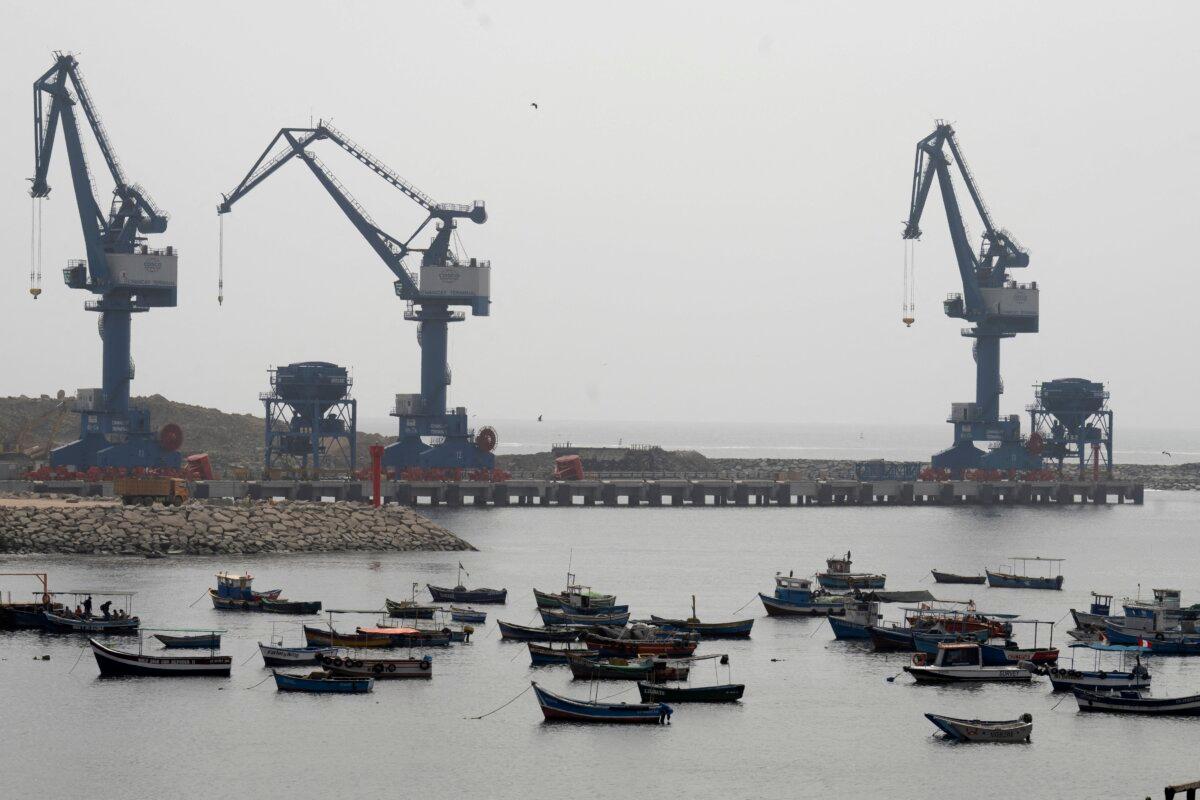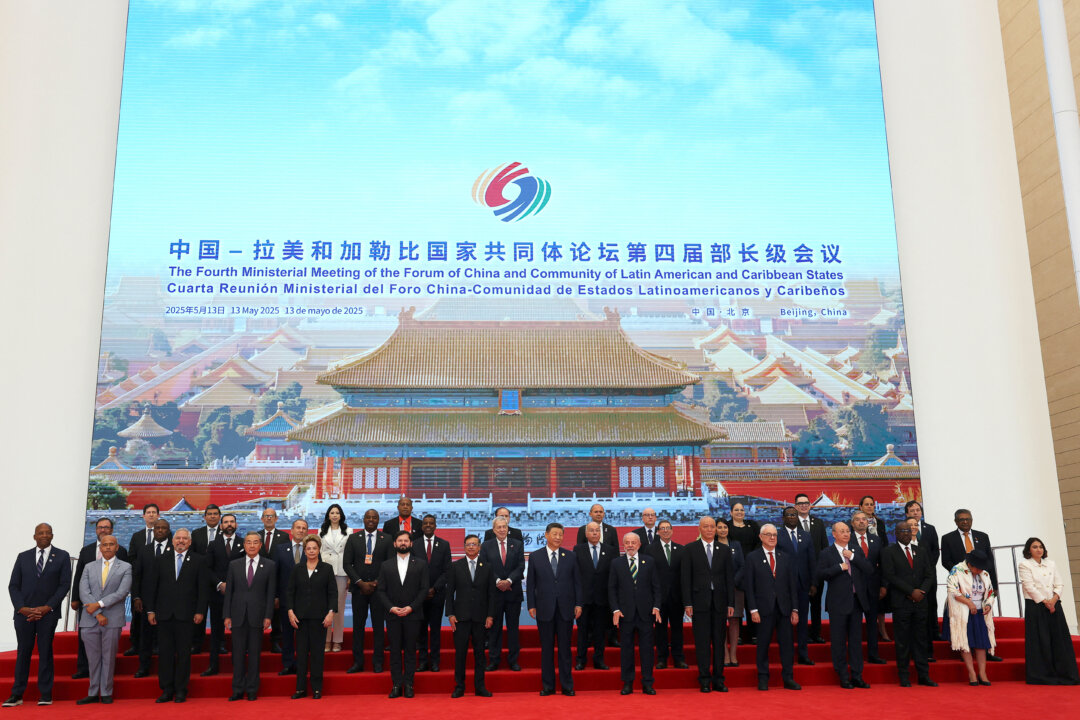Lula’s visit signifies that Beijing has opened a new battlefield in Latin America amid the global blockade by the West, analysts say.
Brazilian President Luiz Inácio Lula da Silva led a delegation of 200 businessmen to Beijing from May 10 to May 14, just as the U.S.–China tariff war started to cool down.
Analysts said it signals that South America is a new battlefield between the Chinese communist regime and the West for future global strategies and influence.
Brazil and China signed 20 cooperation deals in the fields of energy, science and technology, agriculture, railroads, and others, including a $1 billion investment by China’s Envision Energy to produce sustainable aviation fuel in Brazil.
The total value of the agreements is as much as 100 billion yuan ($13.9 billion), according to Chinese media outlet NetEase News.
On May 12, at the “China-Brazil Business Seminar,” Meituan, a major Chinese shopping platform, signed a $1 billion investment agreement. It will launch its Keeta food delivery app in the South American country within months. Lula and Meituan founder and CEO Wang Xing attended the signing ceremony.
While in Beijing, Lula also attended the China–Community of Latin American and Caribbean States (CELAC) Forum, which started on May 13. About 30 Latin American and Caribbean countries attended the ministerial meeting.
Chinese Communist Party (CCP) leader Xi Jinping told Lula, Colombian President Gustavo Petro, and others at the meeting that China will increase imports from Latin American and Caribbean countries and encourage Chinese companies to invest more in the region.
Xi said China and Latin America should “unite in tough times to conquer challenges through mutual support.”
Meanwhile, Lula said at the meeting that Latin American countries should not become overly reliant on outside funding.
“It’s important to understand, [the fate of Latin America] doesn’t depend on anyone else,“ Lula said. ”It does not depend on President Xi Jinping, it does not depend on the United States, it does not depend on the European Union, it depends solely and simply on whether we want to be great or continue to be small.”
Before Lula’s visit, China lifted the import ban on five Brazilian soybean companies because of plant quarantine issues. As the U.S.–China tariff war continues, China has increased its purchases of Brazilian soybeans, which make up more than 70 percent of China’s soybean imports, while imports from the United States have dropped to 24 percent.
Sun Guoxiang, professor at the Department of International Affairs and Business at Nanhua University in Taiwan, told The Epoch Times that the CCP’s lifting of the soybean import ban was a way to “win over Brazil.”
In the U.S.–China trade war, the Chinese regime has made Brazil a stable source to ensure “food supply security” for China while reducing the share of U.S. agricultural products in the Chinese market, he said.
U.S.-based economist Davy J. Wong told The Epoch Times on May 13 that Lula’s trip to Beijing was not an ordinary state visit, “but a ceremony for the global South to reorganize.”
“Beijing’s lift of the import ban on Brazilian soybeans in essence is not to solve the domestic food problem, but to restore its influence in South America, which was on the verge of slipping [out of] Beijing’s control,” he said.
New Railroad to Bypass Panama Canal?
The China–Brazil transport link, also known as the Twin Ocean Railroad Connection project, is one of multiple projects underway between Brazil and China. It involves the joint construction of a 3,100-mile-long railroad across the South American continent, connecting the east coast of Brazil with the Port of Chancay on the west coast of Peru.
The Port of Chancay is being built by Chinese state-owned company COSCO SHIPPING Ports. It aims to provide “an alternative shipping route,” as well as to “reduce shipping costs” between China and Latin America, according to Chinese state media. Xi also noted the cross-continental railway in his speech at the China–CELAC Forum.
Behind the rapid signing of these railway and energy agreements is the CCP’s strategic logic, Wong said, “which is to use market-driven diplomacy and infrastructure to lock the other side’s dependence on Beijing.”
“The concept of a trans-oceanic railway that runs across South America and directly to the Pacific Ocean [is] not a simple economic project, but a strategic channel that Beijing is trying to build to balance [the power dynamics along] the east coast of [the] Americas,” he said.
“That means Beijing is incorporating Brazil into its offshore extension strategic zone, because from the Pacific Ocean, China can sail directly to the west coast of South America. In the future, it may even extend to mineral-rich countries such as Argentina and Bolivia to establish a type of … Southern Silk Road.”

Frank Xie, business professor at the University of South Carolina–Aiken, concurred.
“The CCP obviously still wants to support the trans-oceanic railway and connect the Atlantic and Pacific Oceans through land transportation in South America at this time, and wants to bypass the Panama Canal,“ he said. ”I think this is part of the CCP’s global strategy. It is now working closely with the left-leaning Lula government.”
However, the Brazilian government may eventually have to reach an agreement with the United States instead, Xie told The Epoch Times on May 13.
“After all, the CCP is a bit too far and not so dependable,“ he said. ”Like many countries, Brazil still wants to strike a delicate balance between the United States and China so that it can benefit from both sides.”
Latin America: New Battlefield
Wong said the Lula government has taken “an opportunistic approach” with China and the United States. He said that “it is no coincidence” that Lula is visiting China during this time of U.S.–China competition.
“Without completely leaning towards Beijing, he can squeeze out the maximum amount of support and favorable conditions from Beijing,“ Wong said. ”This is a typical operation of a country that plays both sides: On the one hand, it shouts for autonomy and independence, and on the other hand, it precisely exchanges bargaining chips.
“What it exchanges is not positions or stances, but project funds and exemptions; it exchanges for political and economic interests.”
Sun pointed out that Lula “has long been pro-China and attaches great importance to establishing a ‘Global South Strategic Partnership’ with China.”
According to Sun, Lula, who is in his third term, has placed more emphasis on “multilateralism and ‘de-dollarization.’”
In diplomacy, Sun said, “Lula tends to deepen cooperation with non-Western powers such as China and Russia, while avoiding direct confrontation with the United States.”
However, Wong said that Lula should not simply be classified as pro-Beijing, “but rather … a political force that can mobilize political and economic resources to maneuver between China and the United States in a space where they compete for influence.”
“South America is not Beijing’s new ally, but a new battlefield for future global strategy,” he said. “[Lula’s visit is] just a variable in the reshaping of the global order.
“It is not a sign of Beijing’s victory, but it at least means that Beijing has opened up a new battlefield under the global blockades by the West.”
Sun said that as the competition between Beijing and Washington continues, “Brazil will be able to occupy a larger proportion in China’s ‘anti-U.S. supply chain substitution plan.’”
If the U.S.–China relations continue to worsen, he said, “Brazil may further strengthen its dependence on China, forming a structural trend.”
The United States and China have reached a deal to reduce tariffs against each other for 90 days.
“For the emerging economies, the 90-day buffer period allows India, Southeast Asia, Africa, and other countries to observe the risk between China and the United States and evaluate whether or not to increase exports to China or attract Chinese investment,” Sun said.
Luo Ya, Xia Song, and Reuters contributed to this report.

